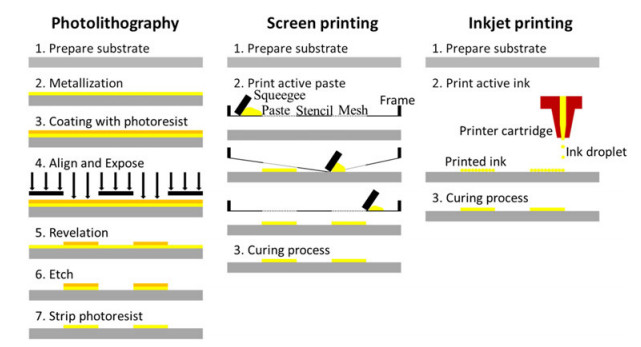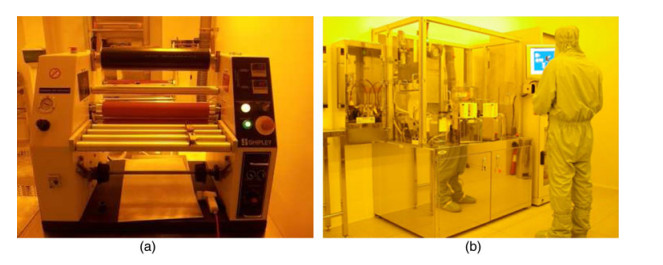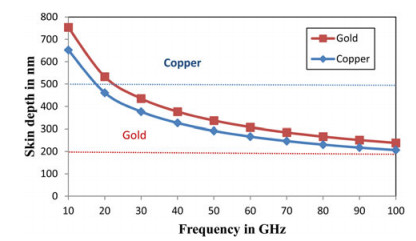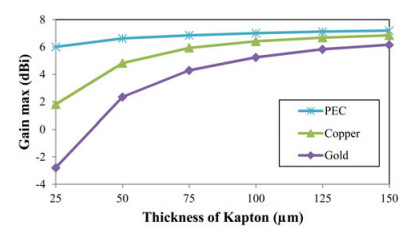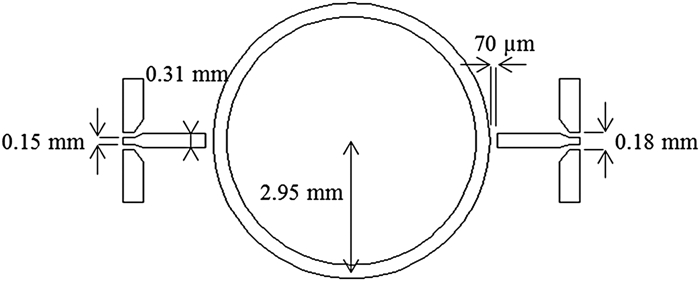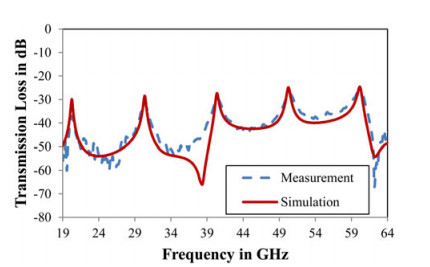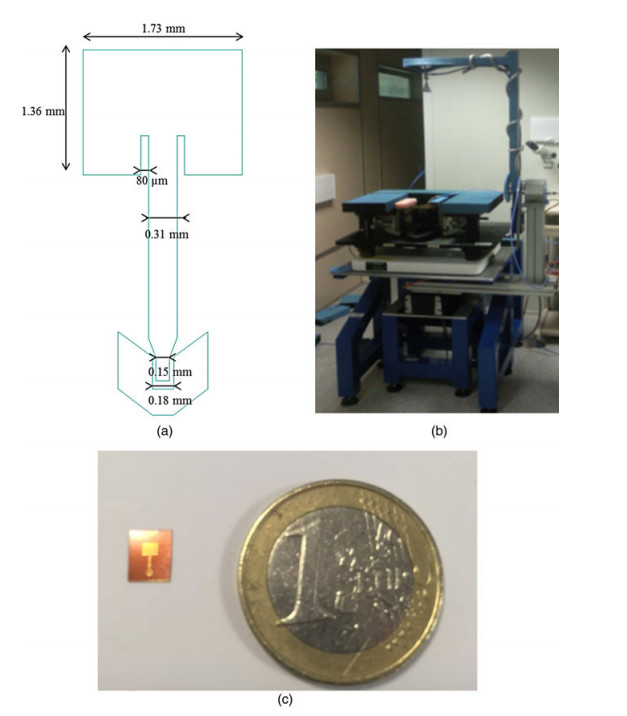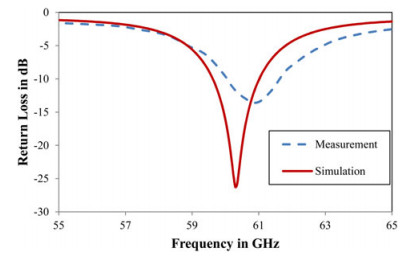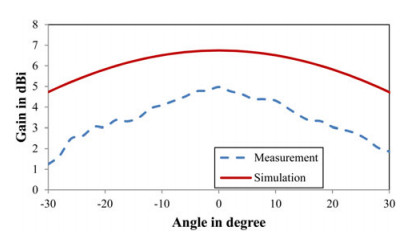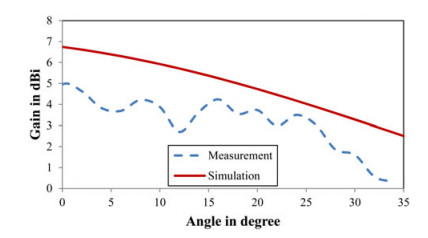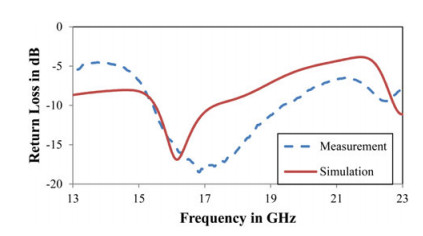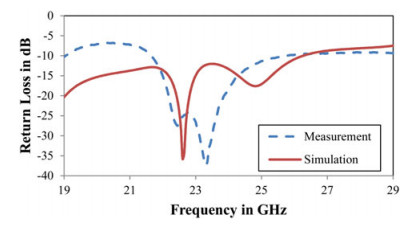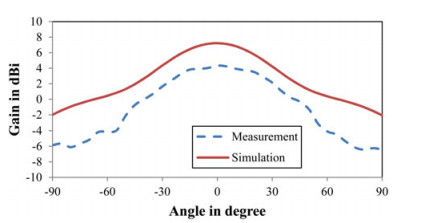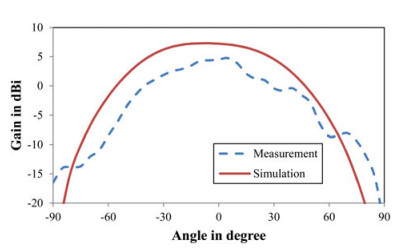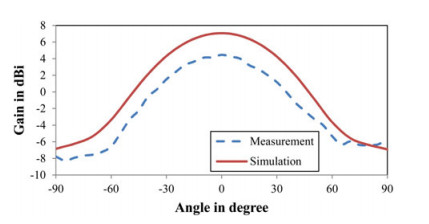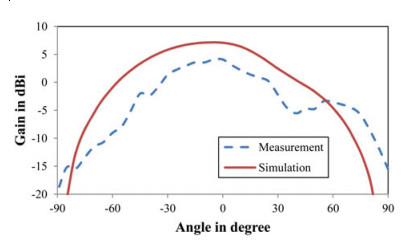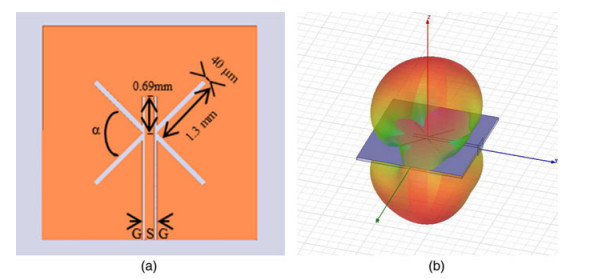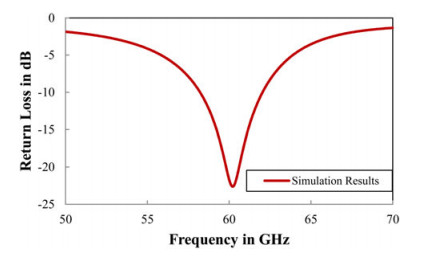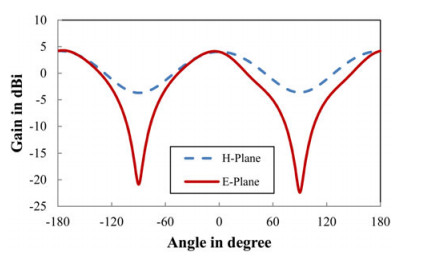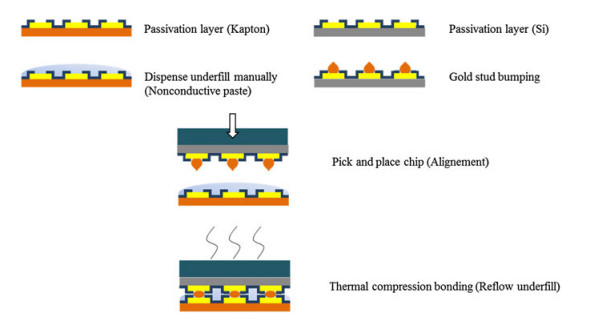Flexible substrate technology for millimeter wave wireless power transmission
-
1.
CNRS, LAAS, 7 Avenue du Colonel Roche, F-31400 Toulouse, France. Phone: +33 5 61 33 63 79
-
2.
Univ de Toulouse, INSA, LAAS, F-31400 Toulouse, France
-
3.
Univ de Toulouse, UPS, LAAS, F-31400 Toulouse, France
More Information
-
Author Bio:
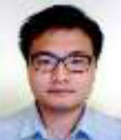 Zhening Yang
Zhening Yang received his M.S. degree in communicating systems engineering from the Pierre and Marie Curie University, Paris, France in 2012. He is currently working towards his Ph.D. degree in micro/nano system for wireless communication at the LAAS-CNRS (Laboratory for Analysis and Architecture of Systems) from the Institut National des Sciences Appliquées de Toulouse (INSA Toulouse), France. His main research interests include the design, modeling and testing of RF/microwave circuits and flexible substrate heterogeneous integration for wireless communication node.
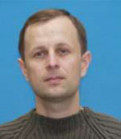 Alexandru Takacs
Alexandru Takacs was born in Simleu Silvaniei, Romania, in March 1975. He received the Engineer diploma in electronic engineering from the Military Technical Academy, Bucharest, Romania, in 1999, and the Master degree and Ph. D. degree in microwave and optical communications from the National Polytechnic Institute of Toulouse, Toulouse, France, in 2000 and 2004, respectively. From 2004 to 2007, he was a Lecturer with the Military Technical Academy of Bucharest, and an Associate Researcher with the Microtechnology Institute of Bucharest. From 2008 to 2010, he occupied a Postdoctoral position with the Laboratory for Analysis and Architecture of Systems (LAAS), National Center for Scientific Research (CNRS), Toulouse, France. During 2011, he was an R & D RF Engineer with Continental Automotive SAS France, where he was in charge of antenna design and automotive electromagnetic simulation. Since 2012, he has been an Associate Professor with the University (Paul Sabatier) of Toulouse, France, where he performs research within LAAS-CNRS. He has authored or coauthored one book, one book chapter, 18 papers in refereed journals, and over 70 communications in international symposium proceedings. His research interests include the design of microwave and RF circuits, energy harvesting and wireless power transfer, small antenna design, microelectromechanical systems (MEMS) circuits and systems, electromagnetic simulation techniques and optimization methods.
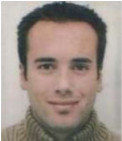 Samuel Charlot
Samuel Charlot was born in 1979. He received the master degree in Materials and Micro Technology from the Var Institute of technology, Toulon, France in 2004. From 2004 to 2006, he worked on the development of microfluidics systems in LAAS-CNRS, Toulouse, France. In 2006, he worked in the packaging of oxygen sensor at Néosens, Labége, France. From 2007 to 2008, he worked on a low cost technology for the integration of sensors silicon in polymer microfluidic systems in LAAS-CNRS, Toulouse, France. Since 2008, he has been working on packaging area and more specifically in screen printing technology and flip chip interconnect technology in the team packaging in LAAS-CNRS, Toulouse, France.
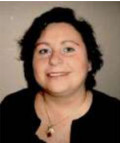 Daniela Dragomirescu
Daniela Dragomirescu is Professor at the University of Toulouse (INSA Toulouse) and LAAS-CNRS laboratory. She received the engineering degree with Magna Cum Laude from the Polytechnic University of Bucarest, Romania in 1996, the MSc in circuits design from the University Paul Sabatier, France, in 1997 and the Ph.D. degree with Magna Cum Laude in 2001 from the University of Toulouse, France. Prof. Dragomirescu is the Head of Microwave and Photonics Systems Department, in LAAS-CNRS laboratory. She is the IEEE Solid States Circuits French Chapter Chair. Prof. Daniela Dragomirescu was French Government Fellow of Churchill College, University of Cambridge from February to September 2014. Prof. Dragomirescu is conducting research in the area of wireless communications with a special focus on Wireless Sensor Networks. Daniela Dragomirescu received in 2005 the French National Research Agency grant for Young Investigator which supported her in setting up the team in the Wireless Sensor Network area. She was also involved in many national and European research projects in the area of wireless communication. Daniela Dragomirescu was the coordinator of one of the nine French NanoInnov project, called Nanocomm on Reconfigurable wireless nano-sensors networks. She has published more than 70 papers in journals and conferences proceedings, 1 patent and has authored 7 academic courses
-
Corresponding author:
D. Dragomirescu Email: daniela.dragomirescu@laas.com
-
Abstract
In this paper, a technology based on thin flexible polyimide substrate (Kapton) to develop antennas for millimeter wave wireless power transmission is presented. Firstly, we characterize the Kapton polyimide (relative permittivity and loss tangent) using a ring resonator method up to V band. A 60 GHz patch antenna is designed, fabricated, and measured to validate our technology. Crossed-dipoles array antennas at Ku band and K band for energy harvesting are also designed, fabricated, and measured. Then a prototype of crossed-slot dipole antenna at V band is proposed. Finally, a resistivity characterization of Au bump used in flip-chip packaging is done, which leads us one step further toward aheterogeneous integration on flexible substrate of different components for Wireless Sensor Network nodes.
-
About this article
Cite this article
Yang Z, Takacs A, Charlot S, Dragomirescu, D. 2016. Flexible substrate technology for millimeter wave wireless power transmission. Wireless Power Transfer 3(1): 24-33 doi: 10.1017/wpt.2015.21
|
Yang Z, Takacs A, Charlot S, Dragomirescu, D. 2016. Flexible substrate technology for millimeter wave wireless power transmission. Wireless Power Transfer 3(1): 24-33 doi: 10.1017/wpt.2015.21
|









 Zhening Yang received his M.S. degree in communicating systems engineering from the Pierre and Marie Curie University, Paris, France in 2012. He is currently working towards his Ph.D. degree in micro/nano system for wireless communication at the LAAS-CNRS (Laboratory for Analysis and Architecture of Systems) from the Institut National des Sciences Appliquées de Toulouse (INSA Toulouse), France. His main research interests include the design, modeling and testing of RF/microwave circuits and flexible substrate heterogeneous integration for wireless communication node.
Zhening Yang received his M.S. degree in communicating systems engineering from the Pierre and Marie Curie University, Paris, France in 2012. He is currently working towards his Ph.D. degree in micro/nano system for wireless communication at the LAAS-CNRS (Laboratory for Analysis and Architecture of Systems) from the Institut National des Sciences Appliquées de Toulouse (INSA Toulouse), France. His main research interests include the design, modeling and testing of RF/microwave circuits and flexible substrate heterogeneous integration for wireless communication node.  Alexandru Takacs was born in Simleu Silvaniei, Romania, in March 1975. He received the Engineer diploma in electronic engineering from the Military Technical Academy, Bucharest, Romania, in 1999, and the Master degree and Ph. D. degree in microwave and optical communications from the National Polytechnic Institute of Toulouse, Toulouse, France, in 2000 and 2004, respectively. From 2004 to 2007, he was a Lecturer with the Military Technical Academy of Bucharest, and an Associate Researcher with the Microtechnology Institute of Bucharest. From 2008 to 2010, he occupied a Postdoctoral position with the Laboratory for Analysis and Architecture of Systems (LAAS), National Center for Scientific Research (CNRS), Toulouse, France. During 2011, he was an R & D RF Engineer with Continental Automotive SAS France, where he was in charge of antenna design and automotive electromagnetic simulation. Since 2012, he has been an Associate Professor with the University (Paul Sabatier) of Toulouse, France, where he performs research within LAAS-CNRS. He has authored or coauthored one book, one book chapter, 18 papers in refereed journals, and over 70 communications in international symposium proceedings. His research interests include the design of microwave and RF circuits, energy harvesting and wireless power transfer, small antenna design, microelectromechanical systems (MEMS) circuits and systems, electromagnetic simulation techniques and optimization methods.
Alexandru Takacs was born in Simleu Silvaniei, Romania, in March 1975. He received the Engineer diploma in electronic engineering from the Military Technical Academy, Bucharest, Romania, in 1999, and the Master degree and Ph. D. degree in microwave and optical communications from the National Polytechnic Institute of Toulouse, Toulouse, France, in 2000 and 2004, respectively. From 2004 to 2007, he was a Lecturer with the Military Technical Academy of Bucharest, and an Associate Researcher with the Microtechnology Institute of Bucharest. From 2008 to 2010, he occupied a Postdoctoral position with the Laboratory for Analysis and Architecture of Systems (LAAS), National Center for Scientific Research (CNRS), Toulouse, France. During 2011, he was an R & D RF Engineer with Continental Automotive SAS France, where he was in charge of antenna design and automotive electromagnetic simulation. Since 2012, he has been an Associate Professor with the University (Paul Sabatier) of Toulouse, France, where he performs research within LAAS-CNRS. He has authored or coauthored one book, one book chapter, 18 papers in refereed journals, and over 70 communications in international symposium proceedings. His research interests include the design of microwave and RF circuits, energy harvesting and wireless power transfer, small antenna design, microelectromechanical systems (MEMS) circuits and systems, electromagnetic simulation techniques and optimization methods.  Samuel Charlot was born in 1979. He received the master degree in Materials and Micro Technology from the Var Institute of technology, Toulon, France in 2004. From 2004 to 2006, he worked on the development of microfluidics systems in LAAS-CNRS, Toulouse, France. In 2006, he worked in the packaging of oxygen sensor at Néosens, Labége, France. From 2007 to 2008, he worked on a low cost technology for the integration of sensors silicon in polymer microfluidic systems in LAAS-CNRS, Toulouse, France. Since 2008, he has been working on packaging area and more specifically in screen printing technology and flip chip interconnect technology in the team packaging in LAAS-CNRS, Toulouse, France.
Samuel Charlot was born in 1979. He received the master degree in Materials and Micro Technology from the Var Institute of technology, Toulon, France in 2004. From 2004 to 2006, he worked on the development of microfluidics systems in LAAS-CNRS, Toulouse, France. In 2006, he worked in the packaging of oxygen sensor at Néosens, Labége, France. From 2007 to 2008, he worked on a low cost technology for the integration of sensors silicon in polymer microfluidic systems in LAAS-CNRS, Toulouse, France. Since 2008, he has been working on packaging area and more specifically in screen printing technology and flip chip interconnect technology in the team packaging in LAAS-CNRS, Toulouse, France.  Daniela Dragomirescu is Professor at the University of Toulouse (INSA Toulouse) and LAAS-CNRS laboratory. She received the engineering degree with Magna Cum Laude from the Polytechnic University of Bucarest, Romania in 1996, the MSc in circuits design from the University Paul Sabatier, France, in 1997 and the Ph.D. degree with Magna Cum Laude in 2001 from the University of Toulouse, France. Prof. Dragomirescu is the Head of Microwave and Photonics Systems Department, in LAAS-CNRS laboratory. She is the IEEE Solid States Circuits French Chapter Chair. Prof. Daniela Dragomirescu was French Government Fellow of Churchill College, University of Cambridge from February to September 2014. Prof. Dragomirescu is conducting research in the area of wireless communications with a special focus on Wireless Sensor Networks. Daniela Dragomirescu received in 2005 the French National Research Agency grant for Young Investigator which supported her in setting up the team in the Wireless Sensor Network area. She was also involved in many national and European research projects in the area of wireless communication. Daniela Dragomirescu was the coordinator of one of the nine French NanoInnov project, called Nanocomm on Reconfigurable wireless nano-sensors networks. She has published more than 70 papers in journals and conferences proceedings, 1 patent and has authored 7 academic courses
Daniela Dragomirescu is Professor at the University of Toulouse (INSA Toulouse) and LAAS-CNRS laboratory. She received the engineering degree with Magna Cum Laude from the Polytechnic University of Bucarest, Romania in 1996, the MSc in circuits design from the University Paul Sabatier, France, in 1997 and the Ph.D. degree with Magna Cum Laude in 2001 from the University of Toulouse, France. Prof. Dragomirescu is the Head of Microwave and Photonics Systems Department, in LAAS-CNRS laboratory. She is the IEEE Solid States Circuits French Chapter Chair. Prof. Daniela Dragomirescu was French Government Fellow of Churchill College, University of Cambridge from February to September 2014. Prof. Dragomirescu is conducting research in the area of wireless communications with a special focus on Wireless Sensor Networks. Daniela Dragomirescu received in 2005 the French National Research Agency grant for Young Investigator which supported her in setting up the team in the Wireless Sensor Network area. She was also involved in many national and European research projects in the area of wireless communication. Daniela Dragomirescu was the coordinator of one of the nine French NanoInnov project, called Nanocomm on Reconfigurable wireless nano-sensors networks. She has published more than 70 papers in journals and conferences proceedings, 1 patent and has authored 7 academic courses 


